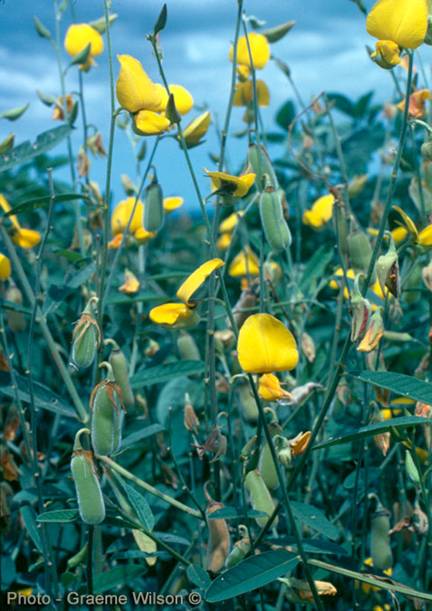VARIETIES. Cultivated varieties are broadly divided into two groups : table and culinary. Among the former are 'Poovan' in Madras (also known as 'Karpura Chakkarekeli' in Andhra Pradesh); 'Mortaman', 'Champa' and 'Amrit Sagar' in West Bengal; 'Basrai', Safed Velchi', Lal Velchi' and 'Rajeli' in Maharashtra; 'Champa' and 'Mortaman' in Assam and Orissa; and 'Rastali', 'Sirumalai', 'Chakkarekeli', 'Ney Poovan', 'Kadali' and 'Pacha Nadan' in southern India. 'Basrai', which is known under different names, viz. 'Mauritius', 'Vamankeli', 'Cavendish', 'Governor', 'Harichal', is also grown in central and southern India. Recently, the 'Robusta' variety is gaining popularity in Tamil Nadu and Karnataka. The 'Virupakshi' variety (Hill banana) is the most predominant variety in the Palni Hills of Tamil Nadu. Among the culinary varieties, Nendran bananas, 'Monthan', 'Myndoli' and 'Pacha Montha Bathis' are the leading
commercial varieties in southern India. 'Gros Michel' is a recent introduction into southern India; it is suitable for cultivation only under garden-
land conditions and is generally fastidious in its cultural requirements. It is not, therefore, in favour with the cultivation.
PROPAGATION AND PLANTING. Propogation is by suckers or off-shoots which spring at the base of a banana-tree from underground rhizomes. Vigorous suckers, with stout base, tapering towards the top and possessing narrow leaves, are selected for
plant. Each sucker should have a piece of underground stem with a few roots attached to it.
Banana suckers can be planted throughout the year in southern India, except during summer, whereas in the rest of the country, the rainy season is preferred. They are planted in small pits, each just enough to accommodate the base of a sucker. The
planting-distance varies from 2m X 2m in the case of dwarf varieties to 4m X 4m in the case of very tall varieties.
MANURING. An application of 20 to 25 kg of farmyard manure, together with about 5 kg of wood-ashes per
plant is given at
planting time. In southern India, ammonium sulphate is applied one month, five months and nine months after
planting 20 kg per hectare each time. In western India, a little over 2 kg of oilcake per stool is applied during the first three months after
planting. A complete
fertilizer mixture may be applied to supply 100 to 200 kg of N, 100 to 200 kg of P
2O
5 and 200 to 400 kg of K
2O per hectare. A green-manure
crop is also considered beneficial. Trials at the Indian Institute of Horticultural Research have shown that for the 'Robusta' variety, a
fertilizer mixture comprising 180 g of N + 108 g of P
2O
5 + 225 g of K
2O per
plant is ideal.
AFTER-CARE. The removal of suckers, dry leaves and pseudostems, from which the fruits have been harvested, constitute the main after-care. Daughter-suckers should be removed promptly until the mother-
plant flowers, when one daughter-sucker may be allowed to take its place. The removal of dry leaves and useless pseudostems requires to be done in time. After all the fruits are formed, the pendant portion of the remaining inflorescence along with the heart should be removed.
The propping of
plants with bamboo poles, especially those which have thrown out bunches, is necessary wherever damage by wind is apprehended. Where the wind damage is recurring, dwarf varieties should be preferred.
IRRIGATION. The banana-
plants require very heavy irrigation. Irrigation is given in most places once in seven to ten days. Stagnation of water in the
soils is not very congenial to the proper growth of banana and, hence, the drainage of
soil is also essential.
HARVESTING. Early varieties commence flowering in southern and western India about seven months after
planting, and the fruits take about three months more to ripen. In the Andhra Pradesh delta areas, the fruits are ready for harvesting about seven to eight months after
planting. The first
crop of the 'Poovan' variety matures in 12 to 14 months and the second in 21 to 24 months after
planting. In other parts of India, the first
crop is usually gathered a year after
planting, whereas the succeeding
crop may be ready in six to ten months thereafter.
The bunch is harvested just before it attains the ripening stage. When the fruits have reached the full size, they become plump, and mature with a distinct change in colour. For long transport, the bunch may be harvested somewhat earlier. The bunch is cut, retaining about 15 cm of the stem above the first hand. The yield varies considerably from 26,000 to 55,000 kg per hectare.
CURING AND MARKETING. The ripening of banana is done in several ways, e.g. exposing the bunches to the sun, placing them over a hearth, wrapping them in closed godowns or smoking them in various ways. One of the common ways is to heap the fruits in a room and cover them with leaves, after which fire is lit in a corner and the room is closed and made as air-tight as possible. Ripening takes place usually in 30 to 48 hours. In a cool store, the bunches ripen well at about 15o to 20oC. The application of vaseline, a layer of clay or coal-tar to the cut-ends of the stalks prevents rotting during ripening and storage.
Wrapping up the fruits and packing them in crates help to reduce the damage during transport.









